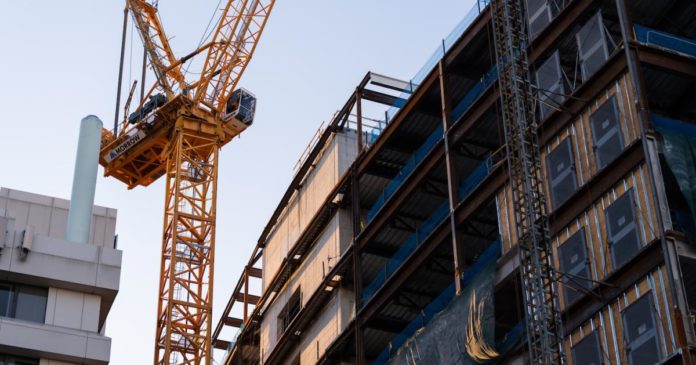
Sustainability proponents have celebrated the leadership of major cities to advance energy efficiency, electrified transportation and other climate change goals during the past decade. Urban leaders from around the world have established impressive collaborations to share information and develop common commitments. Entities as varied as the Rockefeller Foundation and the United Nations have supported urban sustainability initiatives.
The growing economic power of major cities is reflected in the fact that 43 major metropolitan regions generate about two-thirds of the world’s economic productivity and more than 85 percent of its innovations. Meanwhile, the U.N. projects that, by 2050, two-thirds of the population, or about 7 billion people, will live in urban areas primarily because of the economic opportunities they provide.
What is wrong with this picture?
The fly in our sustainable cities soup is that the world’s leading cities stand at the epicenter of economic and many other forms of inequality. Consider these worsening trends:
- Many urban areas in the U.S. and elsewhere are resegregating as wealthy and largely white people wall themselves off from adjacent neighborhoods to be among people like themselves.
- Rising housing prices have stymied the ability of aspiring homeowners and renters from living closer to their places of work.
- Suburbs, once the land of opportunity for aspiring middle classes, have declined as regions for economic growth, opportunity and stability. The number of poor people living in suburbs rose faster than in cities during the past decade.
- Exposure to pollution disproportionately affects people of color and lower incomes.
Connecting these developments are two factors. The disappearing middle class, from 1970 to 2012, the share of American families living in middle-class neighborhoods declined from 65 to 40 percent; and the hyper-concentration of wealth in increasingly fewer areas. For example, just six metropolitan areas — the San Francisco Bay region, New York, Boston, Washington, D.C., San Diego and London — have received almost one-half of all high-tech venture capital in the entire world in recent years.
Why growing wealth concentration undermines sustainable cities
According to leading urban historian and analyst Richard Florida, two kinds of clustering occurs in cities — the cluster of specific firms and industries (such as information technology in Silicon Valley, finance in London and New York City, entertainment in Los Angeles) and the concentration of educated and talented people who seek opportunities in those locations.
Florida concludes in his important book “The New Urban Crisis” that what emerges is a self-reinforcing process that generates its own fundamental contradictions. “Although clustering drives growth,” he writes, “it also increases the competition for limited urban space; the more things cluster in space, the more expensive land gets; the most expensive land gets, the higher housing prices become and the more certain things get pushed out.”
What has evolved in the most successful metropolitan areas are three attributes fostering their rise to economic power and cultural influence — technology, talent and tolerance. This combination of a competitive business climate and a welcoming people climate, says Florida, “appealed to individuals and families of all types — single, married, with children or without, straight or gay.”
The factors catalyzing economic growth in larger cities are also driving inequality.
A closer look under the hood, however, reveals a striking discontinuity between such “progress” and its underlying environmental and societal costs. A just-released Oxfam study (based on research carried out by the Institute for European Environmental Policy and the Stockholm Environment Institute), concludes that by 2030:
- The poorest half of the global population will still emit greenhouse gases far below the level that would yield a 1.5 degrees Celsius temperature increase established by the Paris climate accord.
- The richest 1 percent and 10 percent of people (who largely live in bigger cities) are set to exceed this level by 30 times and nine times, respectively.
This large and growing carbon footprint of the wealthy urban class is paralleled by a continuously widening gap of income inequality with the poor and working classes. According to data collected by the U.S. Bureau of Labor Statistics, the San Jose, California, region (home to Silicon Valley) has the highest level of wage inequality across any urban area in America. That region was followed by Austin, Texas; New York, San Diego and Los Angeles.
In other words, the factors catalyzing economic growth in larger cities are also driving inequality. The leading urban centers, often drivers of the world’s sustainability agenda, have forgotten or ignored those populations — largely people of color or the white working class. Nor is this development limited to the U.S. or Europe as the most rapidly urbanizing places in developing nations are often the poorest.
Hope versus reality
The recent passage of more than $1 trillion bipartisan infrastructure legislation by the U.S. Congress has raised considerable expectations that such investments can both improve environmental quality and reduce economic inequality. Besides containing $550 billion in new funding, the law contains a provision that 40 percent of the benefits go to disadvantaged communities.
Implementing infrastructure projects is a notoriously slow process. Not only is there the challenge of managing complex supply chains, the inflation rate at such projects is likely to be high and the pandemic-related disruptions to the labor market raise the question of whether there will be sufficient numbers of skilled and diverse laborers in the locations where they are needed.
A recent New York Times story on diversity in Boston’s construction workforce threw a cold shower on prospects for achieving a more diverse labor pool. The Boston Residents Jobs Policy law requires a minimum share of work go to city residents, women and people of color on large private construction jobs and those that are publicly funded. The 2017 update of this ordinance mandates that Asian, Black and Latino workers receive at least 40 percent of the work hours on identified projects. A September project review concluded that results were considerably below this target. A related challenge will be in gaining minority worker membership in Boston’s largely white male construction unions.
Proponents for more sustainable cities that ignore inequality and the broader needs of people of color have a challenging task with voters. William Peduto, mayor of Pittsburgh and one of the world’s acknowledged leaders in advancing urban sustainability, lost his re-election primary this year in an overwhelmingly Democratic city. During his campaign, Peduto focused on the city’s economic progress and sustainability improvements, while neglecting to address the needs of minority voters. He was defeated, by a convincing margin, by an African-American candidate who waged a campaign focused on the need for greater inclusivity, police reform and expanded economic opportunity.
At COP26 a variety of side events were focused on technology, energy efficiency, building improvements, transportation and related topics. Yet scant attention was paid to the importance of inequality in limiting the advancement of more sustainable cities. Perhaps that was an oversight by conference organizers. Perhaps there are only so many topics that a COP can address. Or, more likely, inequality is a systemic risk factor that reaches into the very center of a global sustainability community that is oblivious to the issue and to the need.








